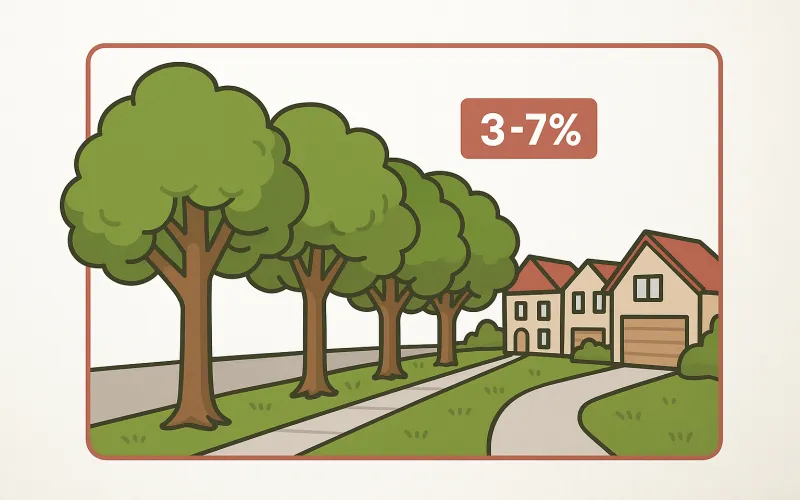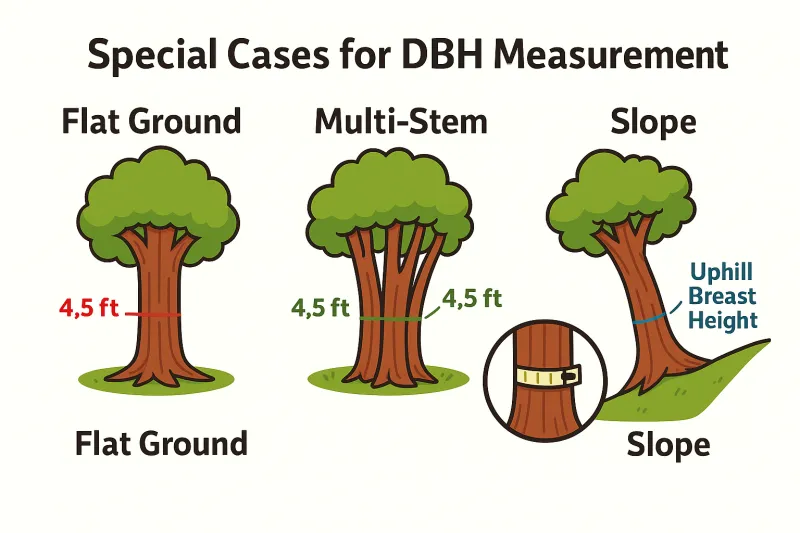Tree Value Calculator
Discover the true worth of your trees with our professional Tree Value Calculator. This tool uses industry-standard arborist methods to determine both the monetary value and environmental benefits of trees based on species, size, condition, and location factors.
Choose the species that most closely matches your tree. Hardwoods like oak and walnut typically have higher ratings.
Evaluate health (foliage, vigor), structure (branches, trunk), and form. Lower for dead branches, cavities, or disease signs.
Consider placement (provides shade, privacy, aesthetics), site suitability, and any conflicts with structures or utilities.
Choose the species that most closely matches your tree. Species with larger canopies typically provide greater environmental benefits.
Rate based on foliage density, branch health, and overall vigor. A tree with full canopy and no dead limbs rates higher.
Your Tree Valuation Results
Annual Environmental Benefits
Tree Value Calculator: Understanding the True Worth of Your Trees
By A Board Certified Master Arborist | Published: April 25, 2025

Mature trees significantly increase property value while providing numerous environmental benefits
Have you ever looked at the majestic oak tree in your yard and wondered what it’s actually worth? Beyond the shade it provides and the aesthetic appeal, trees represent a significant financial asset that often goes unrecognized by homeowners. As a Board Certified Master Arborist with over 15 years of experience, I’ve assessed thousands of trees and helped homeowners understand their true value.
In this comprehensive guide, we’ll explore the various factors that determine a tree’s monetary value, the environmental benefits trees provide, and how professional arborists calculate these values using industry-standard methods.
Why Tree Valuation Matters: Financial Benefits Beyond Aesthetics
Unlike most landscape features which typically depreciate over time, trees are living assets that appreciate in value as they grow. According to recent studies, a properly maintained tree can increase your property’s market value by 3-15%, provide annual energy savings worth hundreds of dollars, and deliver quantifiable environmental benefits that continue to grow year after year.
Understanding your tree’s value becomes particularly important in these scenarios
Tree Value Calculator: The Science Behind the CTLA Trunk Formula Method
Professional arborists in Northern Virginia and nationwide use the Council of Tree and Landscape Appraisers (CTLA) Trunk Formula Method as the industry standard for tree valuation. This scientifically-backed approach calculates a tree’s monetary value based on four primary factors:
- Insurance Claims: When storms or other incidents damage your trees in Virginia, knowing their replacement value helps ensure fair compensation.
- Property Valuation: For real estate transactions, landscape appraisals, or tax assessments, documenting tree value provides a more accurate property valuation.
- Conservation Decisions: When deciding whether to remove or preserve trees during construction or development, understanding their monetary value helps inform cost-benefit analyses.
- Legal Disputes: In cases of tree damage, trespass, or neighbor disputes common in densely populated areas, professional tree valuation is essential for establishing damages.

Homes with mature street trees in Northern Virginia command prices 3-7% higher than comparable properties without trees
1. Size Measurement (DBH)
Measured as the cross-sectional area of the trunk at diameter breast height (DBH), typically 4.5 feet above ground level. This is calculated using the formula: π × (diameter/2)² to get the area in square inches. Larger trees with greater trunk areas have significantly higher base values.
2. Species Rating
Different tree species have inherently different values based on their longevity, hardiness, growth characteristics, and resistance to disease and pests. In Northern Virginia, hardwoods like oak and walnut typically have higher species ratings (80-90%) than softer, shorter-lived trees like Bradford pear (40%).
3. Condition Assessment
Professional arborists evaluate the tree’s health, structural integrity, and form. Trees with full canopies, good structure, and no significant defects receive higher condition ratings. This assessment considers factors like crown density, branch structure, trunk integrity, and signs of disease or damage.
4. Location Evaluation
The tree’s placement, functional benefits, and site contributions affect its value. Trees that provide shade to buildings, screen undesirable views, or occupy prominent landscape positions in Northern Virginia properties receive higher location ratings. This factor also considers potential conflicts with utilities or structures.

A certified arborist measuring tree diameter at breast height (DBH) – the first step in calculating tree value using the CTLA Trunk Formula Method
Environmental Benefits: Quantifiable Value Beyond Aesthetics
Our Tree Value Calculator goes beyond basic monetary value to include environmental benefits that can be quantified and monetized. Here’s how your trees contribute to the environment and your bottom line:
Carbon Sequestration
Trees actively remove carbon dioxide from the atmosphere through photosynthesis. In Northern Virginia, a mature oak tree can sequester approximately 1,045 pounds of CO₂ annually. At current carbon credit values, this represents approximately $95 in yearly environmental value per mature tree.
Stormwater Management
Trees in Virginia’s climate intercept significant rainfall, reducing runoff and alleviating pressure on municipal stormwater systems. A large deciduous tree typically intercepts 10,000-15,000 gallons of water per year, providing stormwater management services worth $115-175 annually per tree.
Energy Savings
In Northern Virginia’s climate, strategically placed shade trees reduce cooling costs by 15-35% during summer months. Mature trees on the west and south sides of homes can reduce air conditioning needs by 10-50%, providing annual energy savings of $100-250 per tree depending on placement and size.
Property Value Increase
Well-maintained trees in Northern Virginia can increase property values by 3-15%. Real estate studies consistently show that homes with mature landscaping and specimen trees sell faster and command higher prices, adding $8,000-20,000 to typical home values in the region.
Case Study: Calculating the Value of a 30″ Red Oak in Northern Virginia
Let’s examine a real-world example of how our Tree Value Calculator assesses a typical 30-inch diameter red oak tree in good condition, strategically placed on a residential property in Fairfax County:
CTLA Trunk Formula Calculation:
- Size Measurement: 30″ diameter = 706.5 square inches of trunk area (π × 15² = 706.5)
- Basic Cost: $42.50 per square inch (Northern Virginia average for specimen trees)
- Species Rating: 80% (Red Oak – highly desirable species in Northern Virginia)
- Condition Rating: 90% (Good health, structure, and form)
- Location Rating: 85% (Well-placed for shade and aesthetics in residential setting)
- Appraised Value: $18,330 (706.5 × $42.50 × 0.8 × 0.9 × 0.85)
Annual Environmental Benefits:
- Carbon Sequestration: $95/year (1,045 lbs CO₂)
- Stormwater Management: $115/year (11,500 gallons)
- Energy Savings: $220/year (25% reduction in cooling costs)
- Property Value Increase: $300/year (assessed as annual benefit)
- Total Annual Benefits: $730/year
This analysis shows that a single mature red oak tree represents an asset worth over $18,000 in replacement value, with additional annual benefits of $730. Over a 40-year lifespan, these annual environmental benefits alone would total more than $29,200 (not accounting for inflation or increasing environmental service values).
How to Maintain and Maximize Your Trees’ Value in Northern Virginia
To ensure your trees maintain and even increase in value over time, follow these professional arboricultural recommendations tailored to Northern Virginia’s unique climate and growing conditions:
- Schedule Professional Assessments: Have your trees inspected by a Grant Brothers Tree Service Certified Arborist every 3-5 years to identify potential health issues early and develop a tree management plan.
- Invest in Proper Pruning: Engage professional tree trimming services to maintain structural integrity, eliminate hazardous branches, and improve aesthetics. Northern Virginia’s mix of humid summers and occasional ice storms requires specialized pruning approaches.
- Apply Correct Mulching Techniques: Use 2-4 inches of organic mulch around trees (maintaining a 3-inch gap from the trunk) to retain moisture, reduce competition from grass, and improve soil health. In Virginia’s clay soils, proper mulching is essential for root health.
- Protect Critical Root Zones: Avoid compacting soil in the root zone, typically extending to the tree’s drip line or beyond. This is particularly important during construction projects, which can severely damage valuable trees.
- Implement Strategic Planting: When adding new trees, select species appropriate for Virginia’s climate zone (7a/7b) and place them where they’ll provide maximum benefits like summer shade on west-facing walls or winter wind protection from northwesterly winds.
- Monitor for Regional Pests: Be vigilant for common Virginia tree pests like Emerald Ash Borer, Gypsy Moth, and Oak Wilt. Early intervention by a certified arborist can save valuable trees from these devastating threats.
Try Our Professional Tree Value Calculator Today
Understanding the value of your trees is the first step in appreciating and protecting these valuable assets. Our advanced Tree Value Calculator below helps you estimate both the monetary value and environmental benefits of your trees using the industry-standard CTLA Trunk Formula Method.
Conclusion: Trees as Appreciating Assets in Your Landscape
Trees are unique landscape elements that literally grow in value over time. By understanding and documenting this value through our Tree Value Calculator, Northern Virginia homeowners can make better decisions about tree care, preservation, and protection.
While this article and calculator provide valuable guidance, the most accurate tree valuations come from professional assessments. If you need a detailed valuation of your trees for insurance, legal, or property purposes, contact Grant Brothers Tree Service for a comprehensive tree evaluation by our Board Certified Master Arborists who understand the unique growing conditions of Northern Virginia.
Protect Your Valuable Trees with Professional Services
- Expert Tree Removal when necessary for safety or property development
- Professional Tree Trimming to maintain health and structural integrity
- 24/7 Emergency Services for storm damage and hazardous situations
- Free Tree Assessment Consultations to evaluate the health and value of your trees
About the Author
-
This article was written by a Board Certified Master Arborist with over 15 years of experience evaluating and caring for trees across the Mid-Atlantic region. Specializing in tree appraisal, preservation, and risk assessment, our team of certified arborists provides expert consultation in legal cases involving tree valuation and damage.
References and Further Reading
- Council of Tree and Landscape Appraisers. (2023). Guide for Plant Appraisal, 10th Edition. International Society of Arboriculture.
- U.S. Forest Service. (2024). i-Tree Tools for Assessing and Managing Forest and Community Trees. https://www.itreetools.org/
- Fairfax County, Virginia – Public Works and Environmental Services. (2024). The Benefits of Planting Trees. https://www.fairfaxcounty.gov/publicworks/benefits-planting-trees
- National Forest Foundation. (2024). A Breath of Fresh Air: How Trees Help Mitigate Climate Change. https://www.nationalforests.org/blog/a-breath-of-fresh-air-how-trees-help-mitigate-climate-change
- Grant Brothers Tree Service. (2025). Professional Tree Services in Northern Virginia. https://virginiatreecare.com/
Frequently Asked Questions About Tree Value
A mature tree’s value depends on species, size, condition, and location. In Northern Virginia, a healthy 30-inch diameter oak tree could be worth $15,000-$25,000 using the CTLA Trunk Formula Method. Our Tree Value Calculator can provide an estimate based on your specific tree’s characteristics.
Professional arborists use the Council of Tree and Landscape Appraisers (CTLA) Trunk Formula Method, which calculates value based on trunk cross-sectional area, species rating, condition assessment, and location factors. This industry-standard approach provides consistent valuations for insurance, legal, and property purposes.
Yes, mature trees can increase property values by 3-15% according to multiple real estate studies. In Northern Virginia’s competitive housing market, homes with mature, well-maintained trees typically sell faster and command higher prices than comparable properties without significant tree cover.
In Northern Virginia landscapes, native oak species (particularly White Oak and Red Oak) typically have the highest value due to their longevity, structural strength, disease resistance, and significant environmental benefits. Other high-value species include Black Walnut, Sugar Maple, and American Beech.
For accurate tree valuations, consult with a Board Certified Master Arborist who has completed Tree and Plant Appraisal Qualification (TPAQ) training. Grant Brothers Tree Service provides professional tree assessments and valuations throughout Northern Virginia, conducted by certified arborists with specialized training in tree appraisal.
